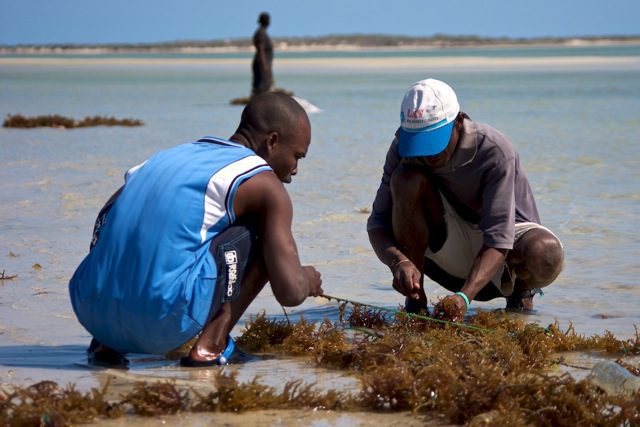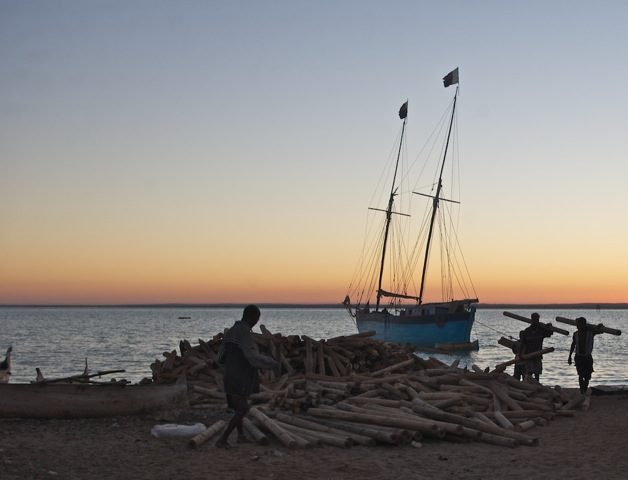By Antoine Rougier, Aquaculture Project Coordinator, Madagascar
The link between seaweed farming and the forests of Madagascar might not appear obvious at first, but when examined a bit more closely, it starts to make much more sense.
Seaweed farming is currently promoted by Blue Ventures as an alternative livelihood for coastal communities. The red algae (Kappaphycus alvarezii) or ‘Cottoni’ is widely produced in the tropical indo-pacific region, in order to supply the agro-industry with carrageenan. Carrageenan is an extract which is used in a variety of different products (such as ice-cream, chocolate milk, toothpaste) for its texturing properties.
This kind of aquatic farming started during the 1970s in the Philippines, and red seaweed farming is now the main source of income for more than 80,000 households across the area – and offers a real potential for an environmentally-friendly way to ‘farm’ the sea.
Indeed, on the marine conservation aspect, seaweed farming shows a real advantage in terms of sustainability: the ‘fields’ are located in low vulnerability, sandy bottomed areas where the seaweed is planted on ropes tied between stakes – with no fertiliser, no mechanised tools and no pollution or eutrophication as found in other types of agriculture.
While seaweed farming has few negative impacts on the marine environment it does require wood for stakes and tables (which are used to dry the seaweed). In the context of Madagascar, where deforestation and erosion are some of the biggest threats to the unique and highly vulnerable terrestrial environments; it is not acceptable for Blue Ventures to ignore this issue while promoting this as an alternative livelihood to coastal communities.
In order to limit the impact of the seaweed farming activity, Blue Ventures is sourcing the project materials through sustainable channels. For example, the seaweed drying tables used for the project have been ordered via a wood production company in Fianarantsoa, one of the few in the country that has passed an environmental impact assessment and has a real management plan for their forests. This is a much more acceptable alternative than sourcing the wood in the Velondriake LMMA area, which would mean encouraging further timber harvest in the Mikea Forest. This is one of the most pristine examples of dry forests in Madagascar, and is home to numerous endemic species of animal and plant, it is also partly a National Park.
While this is a first step to promote sustainable seaweed aquaculture, the use of wooden stakes in the farms is still an issue.To limit the impact of farming on the terrestrial environment, Blue Ventures’ commercial partner is currently developing a seaweed farming system based on a framework of galvanized steel stakes, to avoid the use of wood. Efficient, stronger than wooden stakes and with a lower local impact on the environment, this farming system will soon be tested in Velondriake.
Finally, logistics and transportation is a big issue in a remote location such as Andavadoaka and the Velondriake. The transportation of the farming material would require several trucks travelling the bumpy road from Tulear, the capital of the region. However, the west coast of Madagascar does offer an amazing environmentally-friendly alternative, and the shipments from Tulear are being sent using locally built boats (“Botry” in Malagasy). Common along the coastline of Madagascar, the botry are the most efficient way to transport big shipments and it’s the method Blue Ventures has been utilising for the main items of the project.
The wood pieces being produced in the well managed forests of Madagascar are transported by a wind-powered cargo boat – sounds like another promising step toward a sustainably managed aquaculture project!





